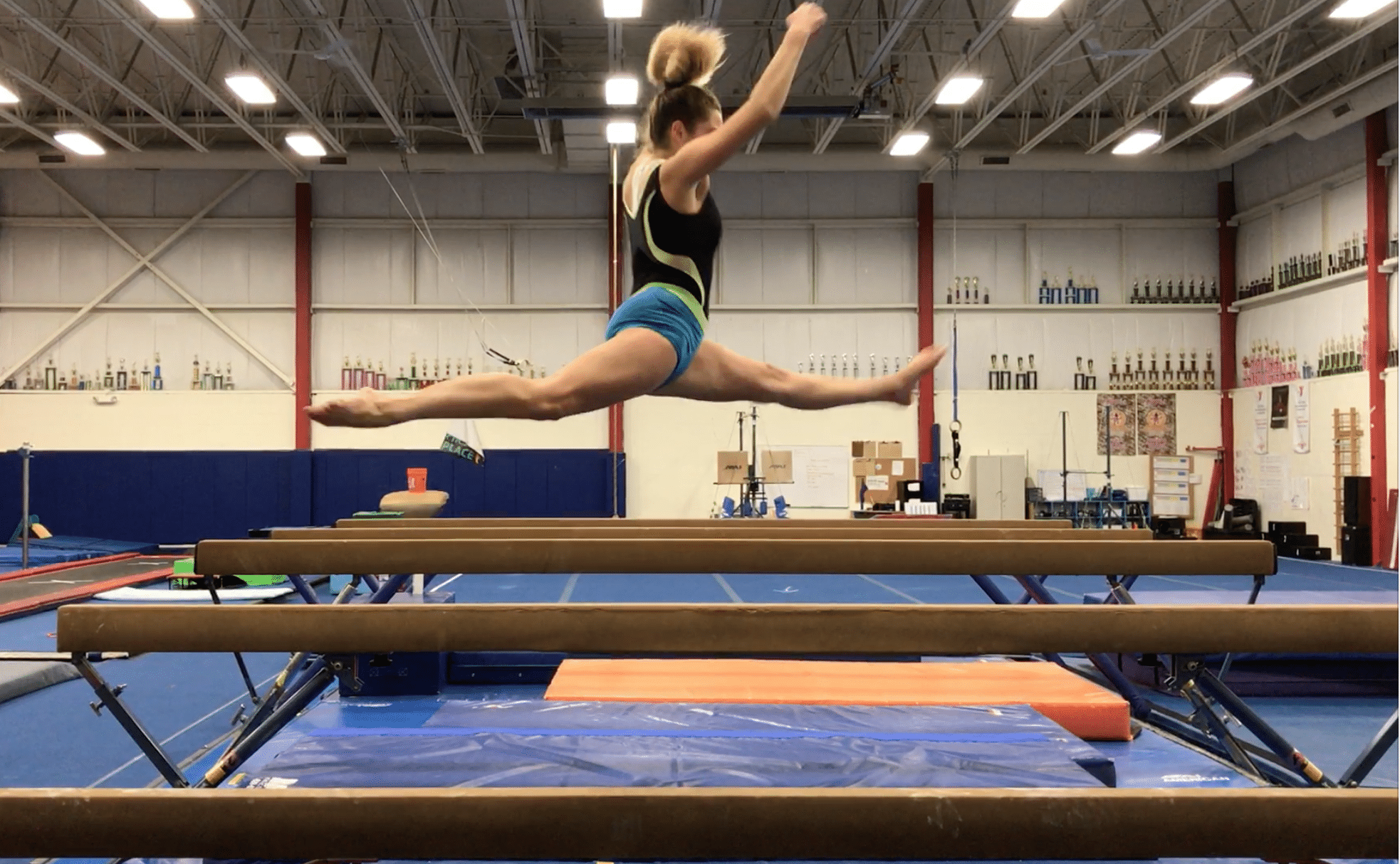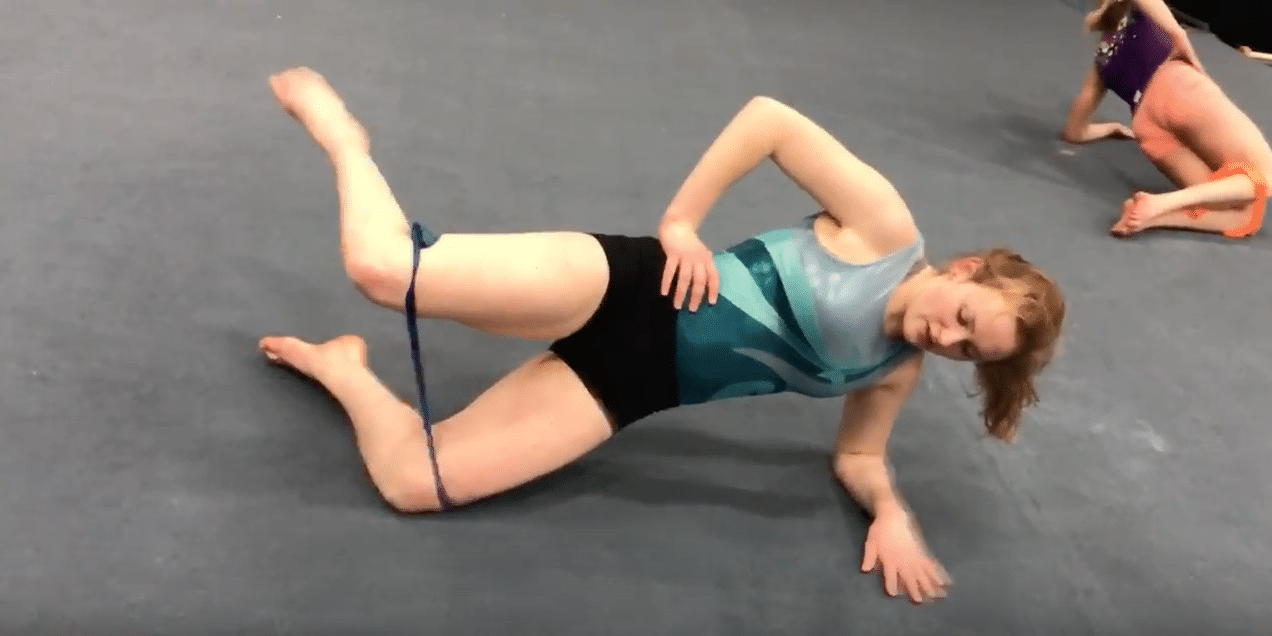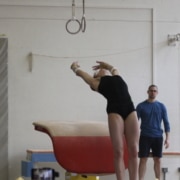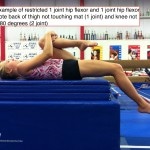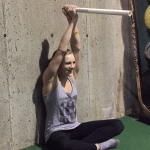Applying Hip Strength Drills For Reduced Pain and Increased Flexibility
Over the last year, I have shared a lot of my thoughts related to how I have drastically changed my approaches to hip and shoulder flexibility training. The “Gymnastics, Please Stop These Stretches” series I wrote (Part 1, Part 2, Part 3) were some of the most popular posts I’ve ever written. My suggestions may be very against the traditional gymnastics approach, and I have received a lot of comments against some of my thoughts.
Also, if you want to learn all of my thoughts on gymnastics flexibility and also download the exact circuits I use for hip flexibility, you can download my free PDF guides here,
Download My New Free
10 Minute Gymnastics Flexibility Circuits
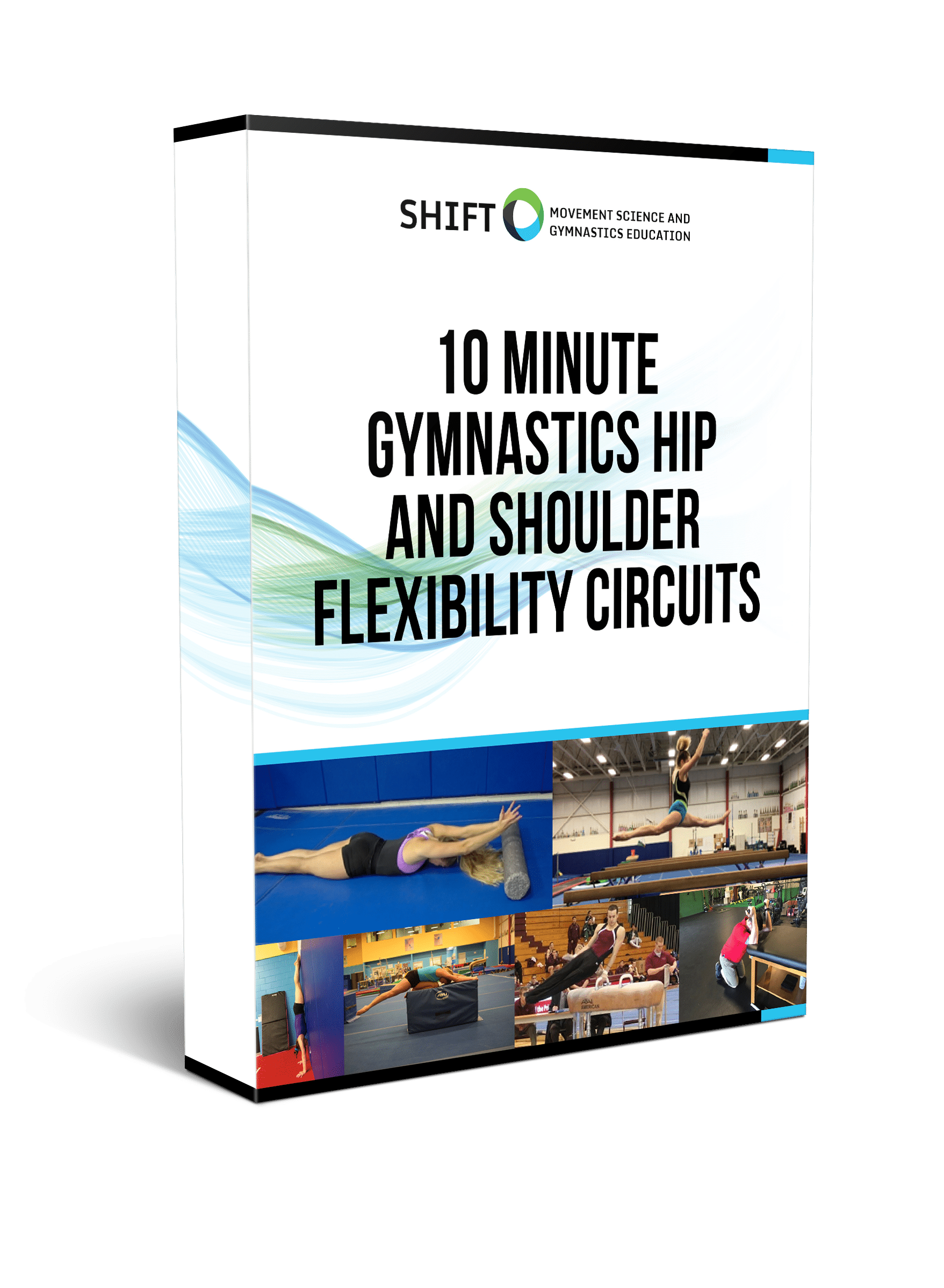
- 4 full hip and shoulder circuits in PDF
- Front splits, straddle splits, handstands and pommel horse/parallel bar flexibility
- Downloadable checklists to use at practice
- Exercise videos for every drill included
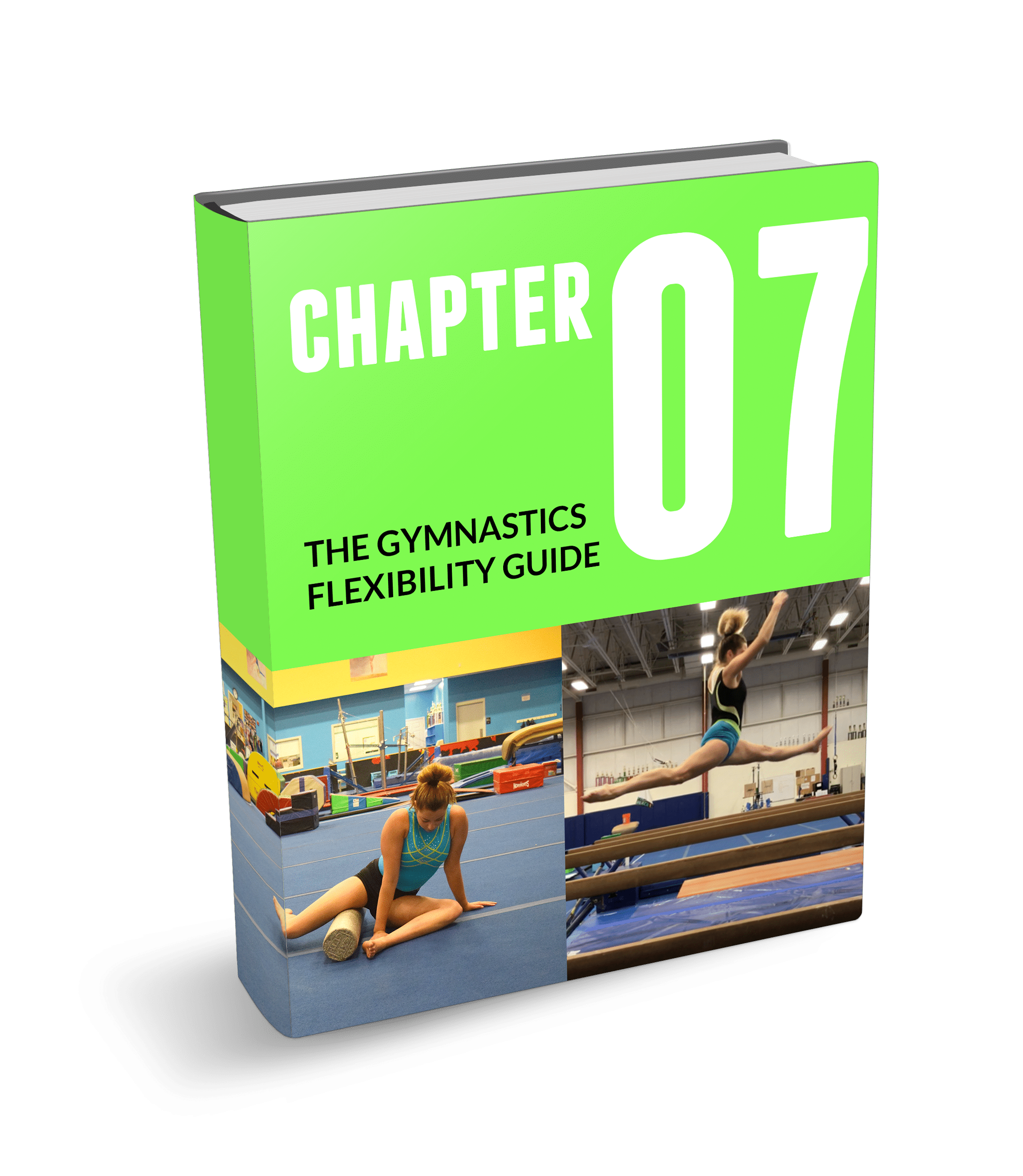
The Gymnastics
Flexibility Guide
- Cutting edge soft tissue, strength, and active flexibility techniques for splits, handstands, and shapes
- Practical traditional stretching methods combined with latest scientific research
- Techniques for increasing flexibility, and making changes transfer to gymnastics skills
We take our privacy seriously and will never share your information. Click here to read our full privacy policy.
That’s okay, as I think it creates some positive discussion to move the sport forward. I have based these newer ideas based off of my experiences (and mistakes) as a coach, the gymnastics clients I treat for instability based injuries, and off of some very interesting recent medical research which all can be found in the articles above.
How Do We Actually Apply This Information To Training?
Recently while teaching at Make It Right Elite Camp in Las Vegas, I gave a long talk to coaches about my concerns for these flexibility methods, why I feel they may be actually limiting gymnastics performance, and how I link this to using formal periodized strength programs. From this talk I had the great chance to meet and share ideas with Craig Zappa of ENA Gymnastics. Craig is a phenomenal coach leading a very successful crew of gymnasts, and what’s even better is he enjoys constantly learning more ways to help them.
Craig asked advice related to to one of his gymnasts having hip pain with splits, leaps, jumps, straddle based releases, and other extreme hip motion related skills. We talked a lot about the concepts from the above articles, as well as how I have changed my approaches to flexibility training in fear of hip instability based injuries. I told him about how both his gymnast and many other athletes are likely just stressing passive structures of their hip, and probably lack full range control/strength to utilize their huge passive flexibility ranges during skills.
I suggested he avoid aggressive passive flexibility approaches (especially in the naturally hypermobile gymnasts) as they likely sparking the injury. Instead, I suggested he focus on active full range control with extra focuses on end ranges, and gave him a hand full of hip drills to try. After a few months, we were talking and he gave me some feedback on how it was going.
“I met Dave in Las Vegas at the Make it Right Camp and was talking to him about some hip pain one of my athletes was complaining about. After talking to Dave and our current Physical Therapist, I implemented a quick 5-minute hip strengthening program. By focusing on the end range movement and constant tension through the range of motion, we have moved past the pain and are gaining a tremendous amount of strength and flexibility at the same time. “ – Craig Zappa
Here are a bunch of videos that show some of the drills I passed along to Craig that he uses daily with his elite athletes. Note that there are different levels of assistance/resistance, and that the positioning and technique is spot on to not allow wild compensation, and his girls are fully engaged taking it seriously.
I also put these 3 videos within some blog posts recently that have others I use a lot.
Want My Favorite Split Flexibility Complex?
The question I almost always get when showing these drills is how to make it work in a practice with limited time, space, and equipment. To help out and answer this question, I have put together a 10 page PDF that outlines one of my go to split flexibility complexes. It builds in some of the drills above, along with some different variations for gymnasts that may struggle with flexibility or be very naturally mobile needing more strength. To download it, just sign up for the SHIFT Insider Email Newsletter here,
The main goal of these drills is to challenge the athlete to reach their full end range, under control, using their own musculature instead of pushing passively or cheating with other body parts. In relation to using assistance, no band, or resistance, it comes down to the athlete. Some gymnasts have a huge passive range but no active control over it, and they should be using assistance in their full range to help close that gap. Some athletes will are close passive vs active ranges, and should maybe go with no assistance or resistance, only their body weight. Some advanced gymnasts are doing great, and have full range control. They are appropriate for the elastic resistance to continue to add strength, and power for their large arcs of motions needed in skills.
I’m not a fan of using ankle weights for resistance on these types of drills, which you can read more about here. Many gymnasts are limited in their passive range by soft tissue limitations. They should first be assessed, then using proper stretching techniques and soft tissue work to help. We also have to understand every gymnast has different anatomy that required individualized care, just like we do with their gymnastics skills. If a girl has a boney alignment limitation, you do not want to be pushing them in flexibility as it will likely cause injury.
Concluding Thoughts
It’s not that saying passive stretching or splits are inherently dangerous, or will automatically cause injury. We do a daily dynamic warm up that has some passive holds built in for position and technique. I just think the methods we use need good scientific anatomical and scientific support. We also need to think critically about why someone can’t reach a hip flexibility angle, and how to address the issue properly to prevent causing problems. Any passive stretching also has to be followed up with control work, strength, proper technique training, and cautious against overuse. Personally, I add in the drills above to mobility complexes and also on our de-loaded active recovery days.
I want to extend a huge shout out to Craig for being open new ideas and being such a great coach who cares about his athletes. Also, props to his high level athletes who understand the importance of doing some of the “boring” grunt work, and knowing it’s not always about flashy skills. I learned a lot from Craig in our short conversations and look forward to working with him more. Hopefully this helps some people out!
– Dr. Dave Tilley, DPT, SCS

